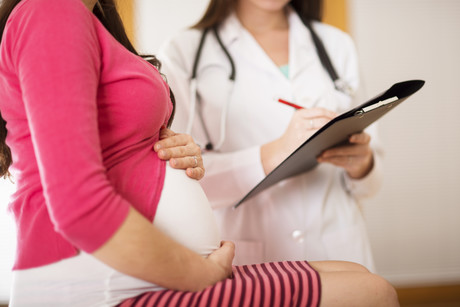Inducing at 39 weeks reduces risk of caesarian

Inducing first-time pregnant women at 39 weeks reduces the need for a caesarian and the risk of pre-eclampsia, according to a new study.
Published in the New England Journal of Medicine, the study found also found that inducing healthy women at 39 weeks was at least as safe for mother and baby as waiting for spontaneous labour, and reduced the likelihood of newborns needing respiratory support after delivery.
The findings are in contrast to a widely held perception that healthcare providers should avoid inducing labour in first-time mothers.
“This doesn’t mean that everyone should be induced at 39 weeks,” said the study’s co-author Dr Robert Silver, chair of Obstetrics & Gynecology at University of Utah Health. “Electing to induce labour is a reasonable option that may give the best chance for vaginal delivery and improve outcomes.”
Results were from 6106 first-time mothers enrolled into a randomised clinical trial carried out at 41 hospitals participating in the National Institutes of Health-supported Maternal Fetal Medicine Units Network.
Rising US C-section rates
The study was motivated by the steadily increasing rate of babies being delivered by C-section in the US, a number that has been holding at 32% since 2016. Medically unnecessary caesarean deliveries in healthy first-time mothers account for 80% of those deliveries, a point of concern.
Although the procedure is generally safe, the major surgery increases risk for complications to both mother and baby, and to future pregnancies. Women who deliver by C-section once are more likely to continue delivering that way, increasing the likelihood of high-risk complications such as placenta accreta.
For years, healthcare providers had been taught to avoid inducing labour in healthy, first-time mothers based on the belief that inducing increases the chance for C-section births. However, recent results from small, observational studies indicated that this may not necessarily be the case.
The trial was designed to test this premise by examining outcomes from two groups of healthy, first-time mothers. One group elected to induce labour at 39 weeks, when the baby is full term and it is considered safe for mothers to give birth. The other group took part in expectant management or “watchful waiting”, the routine practice of waiting for spontaneous labour but undergoing active intervention should a medical need arise.
Comparing inducing labour with waiting
On average, women who chose to induce at 39 weeks delivered nearly one week earlier than women who waited for spontaneous labour. C-section delivery was significantly less likely after elective induction than after expectant management (18.6 vs 22.2%).
Based on these data, the researchers estimate that inducing labour at 39 weeks could eliminate the need for one C-section for every 28 deliveries.
Choosing to induce labour at 39 weeks is at least as safe as spontaneous labour, according to results from the study. A composite score measuring several health indicators in newborns — including death, seizures, haemorrhage and trauma — was not significantly different between the two groups.
Inducing labour was linked to significant improvement in two specific outcomes: women were less likely to develop pre-eclampsia (9 vs 14%), and rates of respiratory distress decreased in newborns. Dr Silver said that the placenta tends not to function as well later in pregnancy, possibly explaining why mothers and babies who deliver earlier may fare better.
The study’s findings held true regardless of the woman’s age, ethnicity and BMI. Currently, researchers are evaluating whether inducing delivery at 39 weeks is cost-effective.
$1bn vaccine and antivenom manufacturing facility opens
A $1 billion cell-based influenza vaccine and antivenom manufacturing facility has opened in...
National concussion clinical guidelines now available
The first Australia- and New Zealand-specific guidelines for all forms of concussion — from...
Doctors criticise "risky prescribing agenda"
The AMA and RACGP have expressed disappointment in the Pharmacy Board of Australia's...




![[New Zealand] Transform from Security Awareness to a Security Culture: A Vital Shift for SMB Healthcare — Webinar](https://d1v1e13ebw3o15.cloudfront.net/data/89856/wfmedia_thumb/..jpg)
![[Australia] Transform from Security Awareness to a Security Culture: A Vital Shift for SMB Healthcare — Webinar](https://d1v1e13ebw3o15.cloudfront.net/data/89855/wfmedia_thumb/..jpg)




